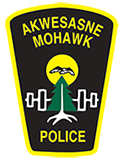
Human trafficking is real and it's in our region.
The most common type of trafficker is the ‘Romeo’ or ‘boyfriend’ trafficker who will lure a victim in online or in person with fancy gifts, promises of love and a better life. He will then get the victim hooked on drugs and isolate her from her friends and family, taking away her cell phone and her identification. Often, she is moved from hotel room to hotel room in different cities and sold by the trafficker for sex several times a day.
Possible signs that someone is being groomed for sex trafficking include changes such as:
- Withdrawing from family and friends
- Being secretive about their activities
- Having a new boyfriend, girlfriend or friend who they won’t introduce to friends and family
- Suddenly spending time with an older person or people
- Staying out more often and later
- Absences from school or a decline in school performance
- Wearing more sexualized clothing
- Having new clothing, jewellery etc. that they can’t afford to buy
- Suddenly having a new or second cell phone with a secret number
What is human trafficking?
Human trafficking involves the recruitment, transportation or harboring of persons for the purposes of exploitation, typically in the sex industry or for forced labor. The key element is exploitation.
Warning Signs that someone may be a victim of human trafficking
According to the Ontario’s Strategy to End Human Trafficking, some of the warning signs include:
- The person is not allowed to speak for themselves and their activities are controlled by someone else.
- The person is under 18 and involved in prostitution or sex work.
- The person is unpaid or paid very little to work, and seems to be treated poorly (long or unusual hours, not allowed breaks, forced to live in poor conditions, etc.).
- The person is repaying a large debt through labour or sex.
- The person seems fearful, anxious, depressed, submissive, tense, or nervous/paranoid. They may avoid eye contact, seem fearful around police, etc.
- The person shows signs of abuse, such as bruising, cigarette burns, fractures, etc.
- The person has tattooing or branding symbols, particularly names.
- The person doesn’t have their own things or money, and doesn’t control their own passport or other documents.
- The person seems malnourished or lacks medical care.
- The person is moved frequently and may not know their surroundings well.
- The person has been reported missing.
- For more signs, visit the Ontario Government’s website.
An estimated 70 percent of the reported cases of human trafficking in Ontario are for the purpose of sexual exploitation; the majority of survivors are Canadian citizens or permanent residents.
It is a world-wide industry worth $152 billion a year, according to the United Nations.
Statistics Canada reports victims of police-reported human trafficking are mostly young, mostly women:
Stats Canada - Trafficking in Persons in Canada, 2014
Between 2009 and 2014, there were 396 victims of police-reported human trafficking. The vast majority of these victims were female (93%).
- Victims of human trafficking were generally young. Among victims of human trafficking reported between 2009 and 2014, close to half (47%) were between the ages of 18 and 24. Additionally, one-quarter (25%) of human trafficking victims were under the age of 18.
- The majority (91%) of victims of human trafficking reported by police between 2009 and 2014 knew the person accused of the crime. More specifically, the most common relationship between the victim and accused was a business relationship (23 %), followed by a casual acquaintance (22%), and a non-spousal intimate partner (18%)
- Between 2009 and 2014, 100 human trafficking victims, or 3 in 10 victims (30%) experienced physical injury as a result of the human trafficking incident reported by police, the majority of injuries were reported as being minor. Of those victims who reported an injury, the most common cause of injury was from physical force (81%).
For more information about sex and labour human trafficking, visit the Ontario Strategy to End Human Trafficking webpage.
Akwesasne Mohawk Police Service
PO Box 90, Akwesasne,
Quebec H0M 1A0
Emergencies: 613-575-2000
Non-emerg.: 613-575-2340
